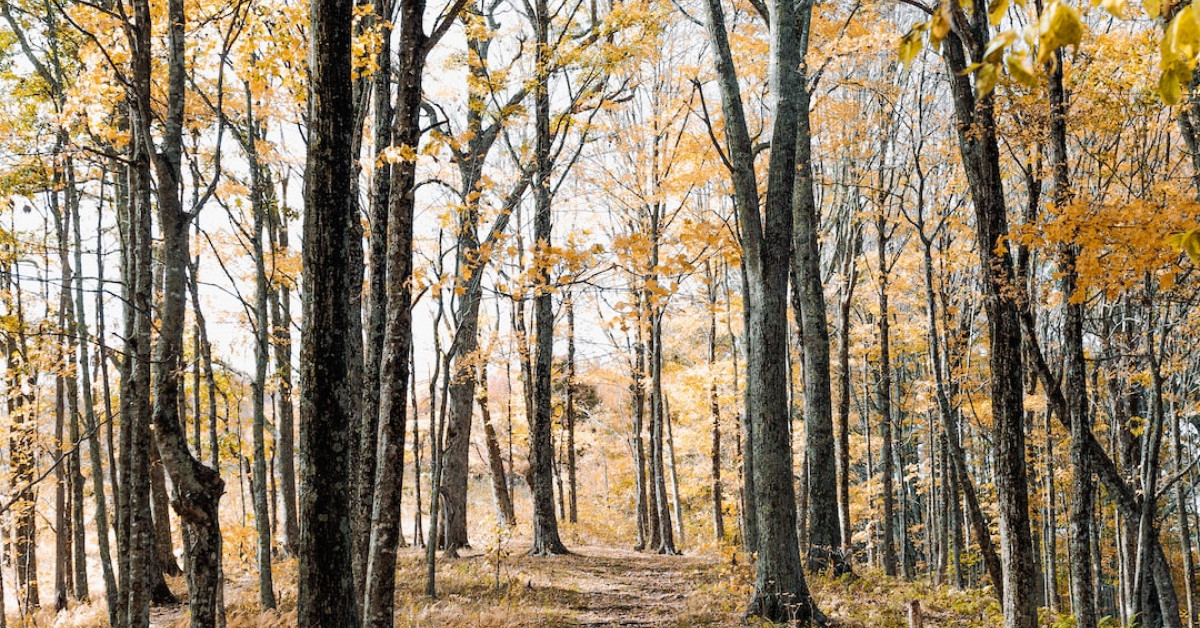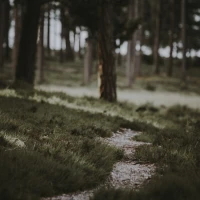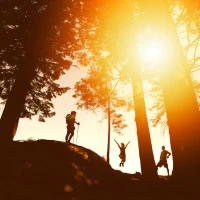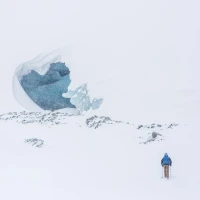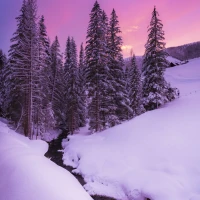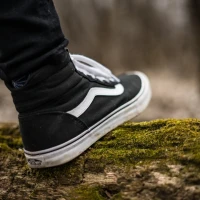When the call of the wild beckons adventurers to step out of their daily routines, many are faced with a choice: to embark on a hike or to take on the challenge of trekking. While both activities lead down winding trails and through breathtaking landscapes, each offers a unique journey into the heart of nature’s splendor. This guide aims to unravel the essence of trekking and hiking, helping you gear up for an expedition that will carve unforgettable memories in the very stone and soil you traverse.
Trekking is not just an activity; it’s a voyage into the unknown, a test of endurance, and a deep dive into cultural immersion. Unlike its counterpart, hiking, trekking is characterized by multi-day journeys, an aspect we’ll explore thoroughly. On the other hand, hiking usually refers to day trips taken on trails and is often considered less strenuous than trekking.
The Quintessential Adventure: Trekking Uncovered
Delving into trekking, as the main subject of our expedition, it’s essential to understand the profound experiences it has to offer. Trekking is more than just a walk in the park; it’s an immersive journey that takes you beyond the beaten path, often for multiple days or weeks at a time, demanding a considerable level of preparation, endurance, and spirit of adventure.
What Defines Trekking?
Trekking is typically characterized by:
- Multi-day itineraries stretching over various terrains
- A need for substantial planning and preparation
- Carrying all necessary equipment and supplies for the journey
- Staying in various accommodations, from tents to lodges
- Experiencing comprehensive cultural encounters
Why Choose Trekking over Hiking?
Trekking holds a magnetic allure for the audacious souls due to its:
- Challenge: The longer duration and often more difficult terrain tap into the innate human desire to push beyond limits.
- Cultural Immersion: Many trekking routes take one through remote villages, allowing for a deeper understanding of local customs and lifestyles.
- Natural Connection: Extended time spent in nature facilitates a connection with the environment that’s both spiritual and rejuvenating.
The Call of the Mountains: Popular Trekking Destinations
Nestled in various corners of the globe are trekking the national parks havens that call to the adventurous heart:
- The mighty Himalayas in Nepal, offering treks to Everest Base Camp or the Annapurna Circuit.
- The legendary trails of Peru leading to Machu Picchu, a trekker’s paradise.
- The diverse landscapes of the European Alps, accommodating trekkers of all skill levels.
Trekking in each of these destinations not only challenges your body but also feeds your soul with their unparalleled scenic beauty and cultural tapestry.
Hiking: A Step into the Wilderness
Although clipart hiking can be conflated with trekking, it stands as an activity with its own unique appeal and set of characteristics. Let’s lace up our boots and see what makes hiking a sought-after adventure for many.
What Hiking Brings to the Table
Hiking, often seen as the gateway to outdoor adventures, involves:
- Shorter, often day-long expeditions, typically returning to a starting point
- Moderate planning and preparatory needs
- Lighter gear, as overnights are usually not part of the equation
- Accessibility for a wider range of age groups and fitness levels
The Allure of Hiking
The simplicity and accessibility of meredith blake hiking outfit make it captivating and rewarding:
- Convenience: With less need for extensive gear, hiking appeals to those looking for spontaneity.
- Variety: From serene forest walks to intensive hill climbs, hiking offers a multitude of experiences.
- Health Benefits: The physical activity involved in hiking promotes cardiovascular health and mental wellbeing.
Discovering the Trail: Hiking Areas Worth Exploring
Hikers have no shortage of enchanting trails to discover:
- The iconic Pacific Crest Trail spanning from Mexico to Canada for the truly bold.
- The scenic beauty of the Grand Canyon pathways in the United States, a hiker’s dream.
- The varied landscapes found in national parks, like Yosemite and Zion.
Each of these trails provides the hikers a unique opportunity to witness the splendor of nature while indulging in a physical pursuit that is as rewarding as it is invigorating.
Gearing Up: The Essentials of Trekking and Hiking
Embarking on a trek or a hike means preparing appropriately. Both activities require certain essentials, but trekking demands more in terms of equipment and provisions due to its extended nature and potential remoteness.
Hiking Gear: What to Pack for a Day on the Trail
Hiking calls for essentials to keep you safe and comfortable:
- Footwear: Durable, supportive boots or shoes tailored to the terrain.
- Weather-appropriate clothing: Layered attire allowing for temperature changes.
- Navigation tools: A map and compass, or a GPS device.
- Food and water: Enough to sustain energy levels and stay hydrated.
- Safety items: First aid kit, knife, and a whistle.
Trekking Equipment: Preparing for the Long Haul
Going on a trek means being self-sufficient, and thus, requires a more comprehensive gear list:
- Backpack: A sturdy, well-fitting pack to hold all your gear.
- Sleeping setup: A lightweight tent, sleeping bag, and mat for overnight stays.
- Cooking apparatus: A compact stove and cookware for meal preparation.
- Clothing: Quick-drying and insulating layers, including waterproof and windproof options.
- Documentation: Necessary permits, ID, and cash for remote transactions.
The Success of Your Journey Is in the Details
Proper planning and gear are instrumental in the success of any outdoor adventure. While hikers may head out with little more than a daypack, trekkers need to bear the weight, literally and figuratively, of carrying their home on their backs.
Physical Fitness and Training for Trekking and Hiking
The physical demands of these activities require a certain level of fitness, with trekking generally requiring a higher degree of preparation due to its more strenuous nature.
Training for a Day Hike
Keeping in shape for a hike can be as simple as:
- Regular cardio exercises, such as brisk walking or jogging
- Strength training, particularly for the lower body
- Practicing hikes of increasing difficulty to improve endurance
Preparing Your Body for a Multi-Day Trek
For trekking, more intensive preparation is advised:
- Endurance training, including longer and weighted hikes
- Strength conditioning, focusing on core and leg muscles
- Altitude acclimatization, if applicable, to prevent altitude sickness
Consistency Is Key
Both trekking and hiking benefit greatly from a consistent training regimen tailored to the individual’s needs and the demands of the chosen route.
Safety First: Navigating Trekking and Hiking Risks
While the thrills of trekking and hiking are undeniable, so are the risks. Being aware of potential dangers and preparing for them adequately can make the difference between a memorable adventure and a cautionary tale.
Common Risks on the Trail
Some risks you may encounter include:
- Weather extremes, from heatwaves to snowstorms
- Wildlife encounters, requiring awareness and respect for local fauna
- Terrain challenges, such as loose rocks or slippery surfaces
Mitigating Outdoor Hazards
To ensure you safely enjoy your climb or trek, consider:
- Checking weather forecasts and trail conditions before departure
- Carrying a means of communication, such as a satellite phone
- Traveling with a companion or group, especially on less traveled paths
A Safe Trekker Is a Happy Trekker
Respecting the environment and your own limits is paramount in trekking and hiking. Safety considerations should never be an afterthought.
The Trekking Experience: Embracing the Journey
Trekking is more than a mere physical challenge; it is a transformative experience on a personal and sometimes spiritual level.
The Mindset of a Trekker
Embarking on a trek requires mental fortitude:
- Patience to endure long distances
- Openness to unexpected challenges and changes
- Resilience to overcome obstacles both internal and external
The Soul of a Trekker: Connecting with Nature
Through trekking, one might find:
- A sense of peace in the remote wilderness
- A newfound perspective on life’s priorities
- A deepened respect for nature and its preservation
Immersive and Enriching Encounters
Whether encountering indigenous communities or contemplating majestic landscapes, trekking offers unparalleled opportunities for growth and enlightenment.
Hiking Leisure: The Joy of Discovery
In contrast to the deep immersion of trekking, hiking offers its own joys suited for those seeking a breather from the trappings of modern life.
The Pleasures of a Day Hike
The leisurely nature of hiking enables:
- Spontaneous explorations of local nature reserves
- Quality time spent with friends and family in a refreshing setting
- Opportunities for wildlife watching and nature photography
A Daily Dose of Nature
Regular hiking can serve as an essential counterbalance to urban living, offering easy access to the restorative powers of the natural world.
In Conclusion: Trekking and Hiking Side by Side
While trekking and hiking are different branches of the same adventurous tree, both encapsulate the essence of exploration and the human spirit’s insatiable quest for communion with nature. Whether you choose to ascend a mountain over the course of a few weeks or enjoy the simple pleasure of a woodland walk, these activities promise a lifetime of memorable journeys.
Embrace the adventure that calls to you, pack your gear with care, train your body for the path ahead, and surrender to the allure of discovery. Whether through the transformative solitude of a trek or the shared camaraderie of a hike, the journey into nature’s embrace is an adventure of a lifetime!
